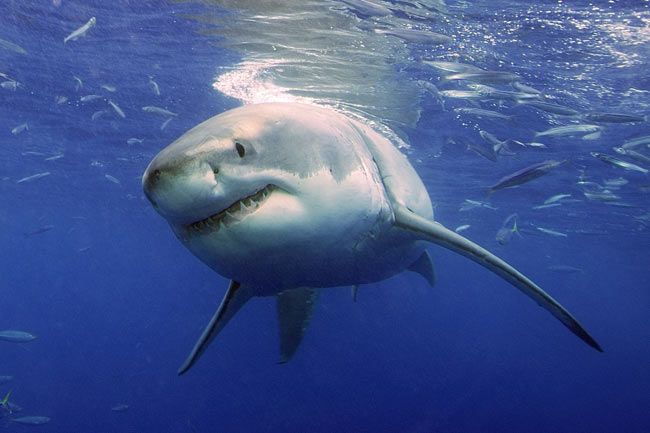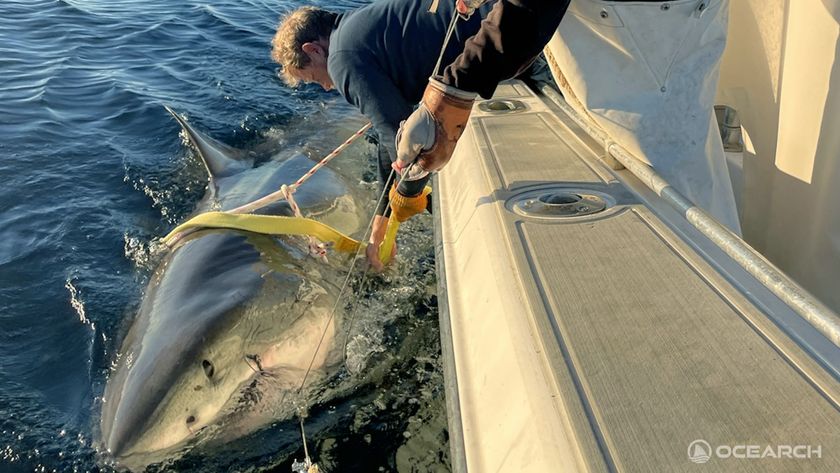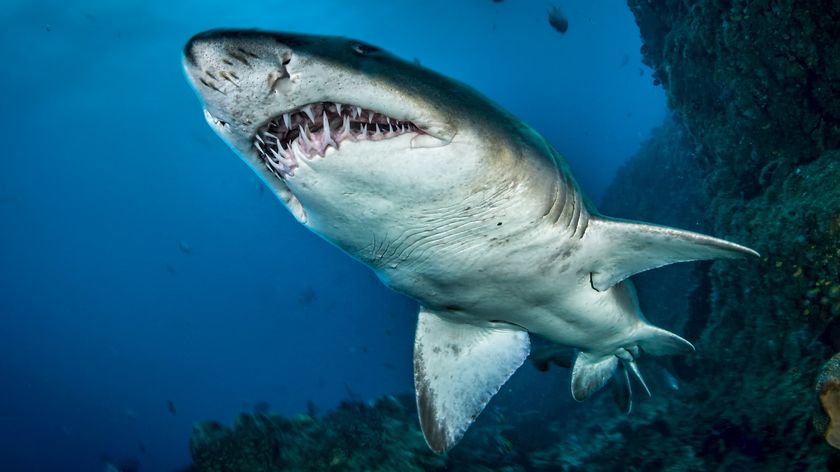Shark Attacks Most Likely on Sunday in 6 Feet of Water

Shark attacks are most likely to occur on Sunday in less than 6 feet of water during a new moon, a new study finds. And there's good reason: That's when a lot of surfers are in the water. Not coincidentally, surfers wearing black-and-white suits are most likely to be attacked.
Saturdays come in second place, and Fridays make a pretty good showing too, "reflective of people skipping work and taking three-day weekends," explained George Burgess, director of the International Shark Attack File at the University of Florida.
Sharks don't want to eat humans. Surfers and other bathers are often mistaken for seals or other typical shark meals, experts say.
Researchers analyzed statistics from shark attacks that occurred in Florida's Volusia County, dubbed the "Shark Attack Capital of the World," between 1956 and 2008. They also spent a year observing people between Daytona Beach and New Smyrna Beach, Burgess said.
"It's basically an analysis of why, where and when in an area that traditionally has had more shark-human interactions than any other stretch of coastline in the world," Burgess said. "One of our students, Brittany Garner, essentially camped out there, counted the number of heads on the beach and took photographs."
While this 47-mile-long section of Central Florida's Atlantic coast leads in human-shark skirmishes, making up 21 percent of all global attacks between 1999 and 2008, most are "hit and run" incidents that seldom cause serious injury and no fatalities occurred, he said.
"Calling them attacks is probably a misnomer because the consequences are usually no more severe than a dog bite," he said. "They're not the same kind of bites made by 10- to 20-foot-long white sharks that you have off the coast of California. Here we see a different style of attack, primarily perpetrated by smaller fish-eating sharks such as spinners and blacktips that are less than 6 to 7 feet long, which because of their size normally seek smaller prey." [How to Avoid Shark Attacks]
Sign up for the Live Science daily newsletter now
Get the world’s most fascinating discoveries delivered straight to your inbox.
Perfect biting storm
There have been 231 shark attacks between the first one reported in 1956 in Volusia County and 2008, Burgess said. The study uses statistics from 220 of those cases for which detailed information is available.
Human, shark and environmental factors combine to create a perfect storm of favorable conditions in Volusia County for attacks, particularly near Ponce Inlet between Daytona Beach and New Smyrna Beach, he said.
The more people in the water the greater the chances they will encounter a shark, and New Smyrna Beach south of the inlet is a "hot spot" for surfers with its well developed sand bars and good waves, Burgess said. Hand splashing and feet kicking provoke sharks, which bite and release what they mistake for normal prey items in the turbid waters, he said.
Also, the strong tidal flow in the inlet makes it "an aquatic smorgasbord of food items for sharks, barracudas, mackerel and other large predators," boosting shark numbers, he said.
Young white males were attacked most because they spend the most time in the water, Burgess said. Ninety percent of victims were male, 77 percent of 196 victims were between 11 and 30 years old and in the 171 cases where race was known, 98 percent were white, he said.
Of the 220 victims, 158 were bit on the leg, compared to 34 on the arm.
Surfers comprised 61 percent of the total. They tended to be bitten more in the early morning and late afternoon when waves were highest and they spend more time surfing.
"At the time of the attack, most of the surfers were sitting or holding onto the board waiting for a wave, which explains why most surf victims were bitten on the legs," Burgess explained.
Moon factor
The greatest number of attacks occurred during new moons, followed by full moons. Perhaps the moon's phases influence the movements and reproductive patterns of fish, the shark's food source, Burgess figures. (A lot of other crazy things have been attributed to the moon, but most are flat false, scientists say.)
Not surprisingly, attacks were highest during the swimming season, from May through October, peaking in August, Burgess said. They spiked in April as sharks began their seasonal northern migration up the eastern coast of the United States, he said.
Most incidents involved one bite, occurred in turbid, murky or muddy waters and were at the water's surface, Burgess said. Only one attack was on a diver, he said.
More victims wore swimsuits that were black and white than any other color combination, followed by black and yellow, attesting to sharks' abilities to see contrast, he said.
Between 1999 and 2008, shark attacks worldwide numbered 639, of which there were 428 reports in the United States, 275 in Florida and 135 in Volusia County. Burgess said.
- Shark Quiz: What Do You Know?
- On the Brink: A Gallery of Wild Sharks
- Great White Lies About Great White Sharks



